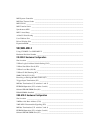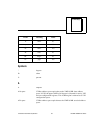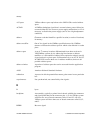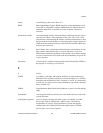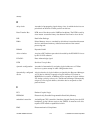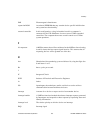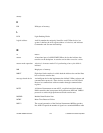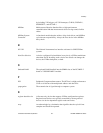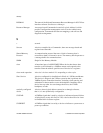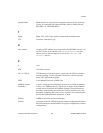
Glossary
©
National Instruments Corporation G-3 VXI/VME-PCI8022 for Solaris
binary A numbering system with a base of 2.
BIOS Basic Input/Output System. BIOS functions are the fundamental level
of any PC or compatible computer. BIOS functions embody the basic
operations needed for successful use of the computer’s hardware
resources.
block-mode transfer An uninterrupted transfer of data elements in which the master sources
only the first address at the beginning of the cycle. The slave is then
responsible for incrementing the address on subsequent transfers so that
the next element is transferred to or from the proper storage location. In
VME, the data transfer may have no more than 256 elements; MXI does
not have this restriction.
BTO unit Bus Timeout Unit; a functional module that times the duration of each
data transfer and terminates the cycle if the duration is excessive.
Without the termination capability of this module, a bus master attempt
to access a nonexistent slave could result in an indefinitely long wait for
a slave response.
bus master A device that is capable of requesting the Data Transfer Bus (DTB) for
the purpose of accessing a slave device.
C
CCelsius
CLK10 A 10 MHz, ± 100 ppm, individually buffered (to each module slot),
differential ECL system clock that is sourced from Slot 0 of a VXIbus
mainframe and distributed to Slots 1 through 12 on P2. It is distributed
to each slot as a single-source, single-destination signal with a matched
delay of under 8 ns.
CMOS Complementary Metal Oxide Semiconductor; a process used in making
chips.
Commander A message-based device which is also a bus master and can control one
or more Servants.
configuration registers A set of registers through which the system can identify a module
device type, model, manufacturer, address space, and memory
requirements. In order to support automatic system and memory
configuration, the VXIbus specification requires that all VXIbus
devices have a set of such registers.





